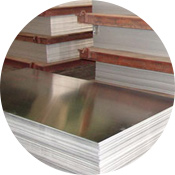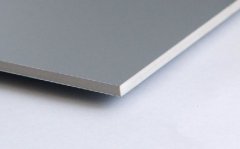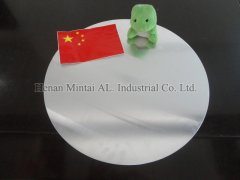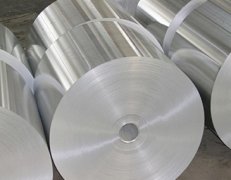You are here:
>
News
>
Curtain wall aluminum plates
Curtain wall aluminum plates
The curtain wall aluminum plate produced by the curtain wall aluminum plate manufacturer has a unique texture, rich and long-lasting color, and the appearance and shape can be diversified. It can be perfectly combined with the glass curtain wall material and the stone curtain wall material. Its perfect appearance and excellent quality make it popular with the owners and its light weight.
Advantages of curtain wall aluminum
The curtain wall aluminum plate manufacturers are rich in color and long-lasting. The appearance and shape can be diversified and can be perfectly combined with the glass curtain wall material and the stone curtain wall material. Its perfect appearance and excellent quality make it popular with the owners. Its light weight is only one-fifth of the marble, one-third of the glass curtain wall, which greatly reduces the load on the building structure and foundation and the maintenance cost. The price of performance is higher. For the curtain wall aluminum plates currently used in China, most of them are composite aluminum plates and aluminum alloy veneers.
Curtain wall aluminum plate treatment process
The treatment process of the curtain wall aluminum plate can be divided into two methods, one is anodizing and the other is electrostatic spraying. The anodized oxide film is generally above 12μ, the color is only bronze and white, the color is monotonous and the more serious disadvantage is that the color of each aluminum plate surface is different. Many pieces of curtain wall panels are combined to form a curtain wall overall effect. This shortcoming can be said to be impossible to eliminate and caused by production technology. Because the aluminum plate is not a batch number, chemical composition, there are small differences, plus the current density of the electrolytic cell during oxidation can not be exactly the same. The color after oxidation is somewhat different and the single sheet may not be obvious. If they are all arranged together, it is very obvious. Therefore, the surface treatment of the aluminum plate of the aluminum curtain wall must not be anodized.
Another method of surface treatment of curtain wall aluminum panels is electrostatic spraying. Spraying is divided into powder spraying and liquid spraying. The powder spray materials are mainly composed of polyurethane, swellable resin, epoxy resin and other raw materials with high color retention pigments. Dozens of different colors of spray powder can be obtained. The sprayed powder is resistant to collision and abrasion. Under the impact of 50 kg, the aluminum plate is deformed and the sprayed layer has no cracks, no falling layer is intact. It is resistant to dilute acid and mortar. The only shortcoming is the long-term exposure to ultraviolet light, which is prone to the difference in color between the yin and the yang. The spray powder produced by many domestic manufacturers has a very different weight. Some powders contain gold dust. After the powder is hung on the wall, it changes with the angle of sunlight. There are changes during the day and dusk, and the color depth of the wall varies. Use powder spray paint to attract attention.
Aluminum alloy veneer introduction
The aluminum alloy veneer is generally an aluminum alloy plate of 2 to 4 mm. When the wall plate is made into a wall plate, the sheet metal processing is first performed according to the requirements of the secondary design and the four corners are welded by high pressure into a tight groove shape. The wall plate is the fixing bolts of the reinforcing ribs are reserved by means of electric welding and nailing on the back. After the sheet metal work is completed, the fluorocarbon paint is sprayed. Generally, there are two coats and three coats and the film thickness is 30-40 μm. The aluminum alloy veneer is easy to process into curved and multi-folded or acute angles, which can adapt to the needs of today's ever-changing exterior wall decoration and is rich in color. It can be arbitrarily selected according to the design and the owner's requirements, which truly broadens the architect and our design space.
Performance comparison between curtain wall aluminum and composite panels
1, material
Composite aluminum plate - two layers of 0.5mm thick pure aluminum plate sandwiched with PVC or PEC plastic roll, heat sealed.
Aluminum alloy veneer - 2 ~ 3mm aluminum alloy plate.
2, fluorocarbon coating
Composite aluminum plate - one-time roll printing, the coating thickness is generally 20μm.
Aluminum alloy veneer - 2 or 3 times of spraying, the coating thickness is generally 30 ~ 40μm.
colour
Composite aluminum plate - the choice of color is small, generally more gray. The specific color needs a large amount of order to be single processing and is difficult to achieve. Color identity is good, but directional to reduce the rate of finished products.
Aluminum alloy veneer - can be arbitrarily selected according to the design and the owner's requirements.
4, life
Composite aluminum plate - about 10 years.
Aluminum alloy veneer - for more than 50 years.
5, airtight
Composite aluminum plate - four corners open.
Aluminum alloy veneer - four corners welded tightly.
6, wind resistance
Composite aluminum plate - poor resistance to wind pressure deformation.
Aluminum alloy veneer - good resistance to wind pressure deformation.
7, anti-temperature degeneration
Composite aluminum plate - aluminum plate and plastic have large difference in expansion coefficient, which is prone to foaming and peeling.
Aluminum alloy veneer - the same material, the wall plate itself has no effect when the temperature changes.
8, lightning resistance
Composite aluminum plate - not resistant to lightning strikes, strong current is difficult to ground through the composite aluminum plate. 0.5mm thick aluminum plate will be penetrated.
Aluminum alloy veneer - can be used as a good conductor of electricity, through the building grounding system to quickly deliver lightning currents to the ground.
9, wall plate shape
Composite aluminum plate - Due to material limitations, it is suitable for processing simple shapes but not suitable for folding angles, and <90° bending is prone to breakage.
Aluminum alloy veneer - easy to process into a special-shaped plate with a wide range of bending angles.
10, processability
Composite aluminum sheet – can be machined on site to cope with dimensional changes caused by on-site construction errors.
The aluminum alloy veneer - made by the manufacturer, is suitable for the on-site construction error, and has high requirements for secondary design.
11, the rate of finished products
Composite aluminum sheet - generally 60% to 70%.
Aluminum alloy veneer - 100%.
12. Yield rate
Composite aluminum plate - manual operation of the planer, if the depth of the groove is not well controlled, it will hurt the outer aluminum plate, causing the bend to break and produce waste products. The yield is generally 96% to 98%.
Aluminum alloy veneer - produced by the manufacturer, the factory yield is 100%.
13. Construction quality
Composite aluminum plate - Because the wall plate is mostly on-site processing, the quality control conditions are poor, the work is cut corners and the situation of sub-filling is easy to appear in this link. The quality of the wallboard will affect the construction quality.
Aluminum alloy veneer - The production plant controls the production quality according to international standards. The quality of the wallboard is reliable, which provides the premise of ensuring the construction quality.
14, the scope of application
Composite aluminum plate - suitable for facade decoration, elevated corridors, pedestrian bridges and low-rise curtain walls.
Aluminum alloy veneer - suitable for high-rise curtain wall and large-area curtain wall.
15. Environmental protection
Composite aluminum plate - in case of high temperature, it will produce harmful gas and not fireproof and difficult to recycle.
Aluminum alloy veneer - fireproof, easy to recycle, no pollution to the environment.
Related product standards
The national standard for aluminum strip (GB/T 3880-2006) is applicable to the uniform standard of aluminum alloy strip material.
Advantages of curtain wall aluminum
The curtain wall aluminum plate manufacturers are rich in color and long-lasting. The appearance and shape can be diversified and can be perfectly combined with the glass curtain wall material and the stone curtain wall material. Its perfect appearance and excellent quality make it popular with the owners. Its light weight is only one-fifth of the marble, one-third of the glass curtain wall, which greatly reduces the load on the building structure and foundation and the maintenance cost. The price of performance is higher. For the curtain wall aluminum plates currently used in China, most of them are composite aluminum plates and aluminum alloy veneers.
Curtain wall aluminum plate treatment process
The treatment process of the curtain wall aluminum plate can be divided into two methods, one is anodizing and the other is electrostatic spraying. The anodized oxide film is generally above 12μ, the color is only bronze and white, the color is monotonous and the more serious disadvantage is that the color of each aluminum plate surface is different. Many pieces of curtain wall panels are combined to form a curtain wall overall effect. This shortcoming can be said to be impossible to eliminate and caused by production technology. Because the aluminum plate is not a batch number, chemical composition, there are small differences, plus the current density of the electrolytic cell during oxidation can not be exactly the same. The color after oxidation is somewhat different and the single sheet may not be obvious. If they are all arranged together, it is very obvious. Therefore, the surface treatment of the aluminum plate of the aluminum curtain wall must not be anodized.
Another method of surface treatment of curtain wall aluminum panels is electrostatic spraying. Spraying is divided into powder spraying and liquid spraying. The powder spray materials are mainly composed of polyurethane, swellable resin, epoxy resin and other raw materials with high color retention pigments. Dozens of different colors of spray powder can be obtained. The sprayed powder is resistant to collision and abrasion. Under the impact of 50 kg, the aluminum plate is deformed and the sprayed layer has no cracks, no falling layer is intact. It is resistant to dilute acid and mortar. The only shortcoming is the long-term exposure to ultraviolet light, which is prone to the difference in color between the yin and the yang. The spray powder produced by many domestic manufacturers has a very different weight. Some powders contain gold dust. After the powder is hung on the wall, it changes with the angle of sunlight. There are changes during the day and dusk, and the color depth of the wall varies. Use powder spray paint to attract attention.
Aluminum alloy veneer introduction
The aluminum alloy veneer is generally an aluminum alloy plate of 2 to 4 mm. When the wall plate is made into a wall plate, the sheet metal processing is first performed according to the requirements of the secondary design and the four corners are welded by high pressure into a tight groove shape. The wall plate is the fixing bolts of the reinforcing ribs are reserved by means of electric welding and nailing on the back. After the sheet metal work is completed, the fluorocarbon paint is sprayed. Generally, there are two coats and three coats and the film thickness is 30-40 μm. The aluminum alloy veneer is easy to process into curved and multi-folded or acute angles, which can adapt to the needs of today's ever-changing exterior wall decoration and is rich in color. It can be arbitrarily selected according to the design and the owner's requirements, which truly broadens the architect and our design space.
Performance comparison between curtain wall aluminum and composite panels
1, material
Composite aluminum plate - two layers of 0.5mm thick pure aluminum plate sandwiched with PVC or PEC plastic roll, heat sealed.
Aluminum alloy veneer - 2 ~ 3mm aluminum alloy plate.
2, fluorocarbon coating
Composite aluminum plate - one-time roll printing, the coating thickness is generally 20μm.
Aluminum alloy veneer - 2 or 3 times of spraying, the coating thickness is generally 30 ~ 40μm.
colour
Composite aluminum plate - the choice of color is small, generally more gray. The specific color needs a large amount of order to be single processing and is difficult to achieve. Color identity is good, but directional to reduce the rate of finished products.
Aluminum alloy veneer - can be arbitrarily selected according to the design and the owner's requirements.
4, life
Composite aluminum plate - about 10 years.
Aluminum alloy veneer - for more than 50 years.
5, airtight
Composite aluminum plate - four corners open.
Aluminum alloy veneer - four corners welded tightly.
6, wind resistance
Composite aluminum plate - poor resistance to wind pressure deformation.
Aluminum alloy veneer - good resistance to wind pressure deformation.
7, anti-temperature degeneration
Composite aluminum plate - aluminum plate and plastic have large difference in expansion coefficient, which is prone to foaming and peeling.
Aluminum alloy veneer - the same material, the wall plate itself has no effect when the temperature changes.
8, lightning resistance
Composite aluminum plate - not resistant to lightning strikes, strong current is difficult to ground through the composite aluminum plate. 0.5mm thick aluminum plate will be penetrated.
Aluminum alloy veneer - can be used as a good conductor of electricity, through the building grounding system to quickly deliver lightning currents to the ground.
9, wall plate shape
Composite aluminum plate - Due to material limitations, it is suitable for processing simple shapes but not suitable for folding angles, and <90° bending is prone to breakage.
Aluminum alloy veneer - easy to process into a special-shaped plate with a wide range of bending angles.
10, processability
Composite aluminum sheet – can be machined on site to cope with dimensional changes caused by on-site construction errors.
The aluminum alloy veneer - made by the manufacturer, is suitable for the on-site construction error, and has high requirements for secondary design.
11, the rate of finished products
Composite aluminum sheet - generally 60% to 70%.
Aluminum alloy veneer - 100%.
12. Yield rate
Composite aluminum plate - manual operation of the planer, if the depth of the groove is not well controlled, it will hurt the outer aluminum plate, causing the bend to break and produce waste products. The yield is generally 96% to 98%.
Aluminum alloy veneer - produced by the manufacturer, the factory yield is 100%.
13. Construction quality
Composite aluminum plate - Because the wall plate is mostly on-site processing, the quality control conditions are poor, the work is cut corners and the situation of sub-filling is easy to appear in this link. The quality of the wallboard will affect the construction quality.
Aluminum alloy veneer - The production plant controls the production quality according to international standards. The quality of the wallboard is reliable, which provides the premise of ensuring the construction quality.
14, the scope of application
Composite aluminum plate - suitable for facade decoration, elevated corridors, pedestrian bridges and low-rise curtain walls.
Aluminum alloy veneer - suitable for high-rise curtain wall and large-area curtain wall.
15. Environmental protection
Composite aluminum plate - in case of high temperature, it will produce harmful gas and not fireproof and difficult to recycle.
Aluminum alloy veneer - fireproof, easy to recycle, no pollution to the environment.
Related product standards
The national standard for aluminum strip (GB/T 3880-2006) is applicable to the uniform standard of aluminum alloy strip material.



